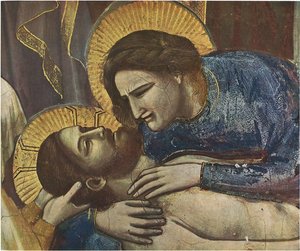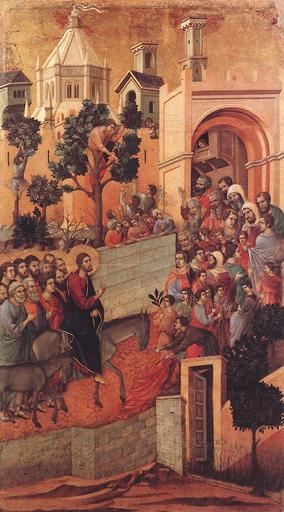
After this Joseph of Arimathea, who was a disciple of Jesus, but secretly, for fear of the Jews, asked Pilate that he might take away the body of Jesus, and Pilate gave him leave. So he came and took away his body.
Mary sees her son die, the Son of God and her son too. She knows that he is innocent, but took upon himself the burden of our misery. The mother offers her son, the son offers his mother. To John and to us.
Jesus and Mary: here we see a family that on Calvary suffers as it experiences the ultimate separation. Death parts them, or at least it seems to part them: a mother and son united by an unfathomable bond both human and divine. Out of love they surrender it. Both abandon themselves to the will of God.
Into the chasm opened in Mary's heart comes another son, one who represents the whole human race. Mary's love for each of us is the prolongation of her love for Jesus. In Jesus' disciples she will see his face. And she will live for them, to sustain them, to help them, to encourage them and to help them to acknowledge the love of God, so that they may turn in freedom to the Father.
What do they say to me, to us, to our families, this mother and son on Calvary? Each of us can only halt in amazement before this scene. We know instinctively that this mother and this son are giving an utterly unique gift. In them we find the ability to open our hearts and to expand our horizons to embrace the universe.
There, on Calvary,
at your side, Jesus, who died for us,
our families welcome the gift of God:
the gift of a love
which can open our arms to the infinite.
The 13th Station Meditation of the Way of the Cross, Rome
Danilo and Anna Maria Zanzucchi




